Comprehensive Testing of Insole Materials: Thickness, Flexing Index, Abrasion, and Water Absorption/Desorption
QB/T 1472, BS 5131: 4.2, SATRA TM3
The quality and performance of insoles directly affect wearing comfort and foot health. Through comprehensive insole material testing, the safety, comfort, and durability of insoles during use can be ensured.
Insoles are a critical component in footwear that directly contacts the foot, providing comfort, support, and cushioning. To ensure the comfort, safety, and durability of insoles, a series of tests must be conducted.

The testing items for insoles primarily include the following aspects:
1. Thickness (mm)
The thickness of insoles directly affect their cushioning effect and support performance.
Test apparatus:
Thickness Gauge ( Leather ) GT-KD07
The thickness gauge is used to measure the thickness of vulcanized rubber and leather products. Clamp specimen between up and down parallel round plates. The pointed graduation is the thickness.
Standards:
IS 15298 (Part 1)
BS-903-A38, ISO-4648, AASTMD1813, ISO 2589, SATRA TM48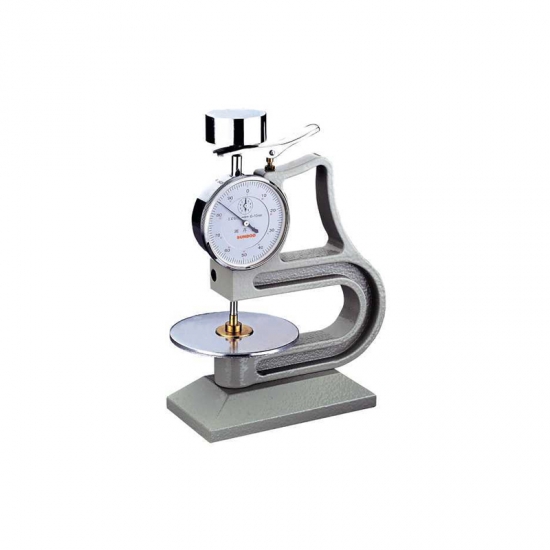
Evaluate the durability and fatigue performance of insole materials or products under repeated bending and flexing conditions. Simulate the usage conditions of insoles under repeated bending conditions to test their fold resistance. Insoles with good fold resistance are less likely to break or deform during prolonged use.
Test apparatus:
Fibre Board Flexing Tester GT-KB07
Fibre Board Flexing Tester is used to determine flex test for shoe insole fiberboard and applicable for common leather shoes and sneaker insole fiberboard, but not for toe cap, counter-heel, semi-back and special leather shoes and sneaker insole fiberboard.
Standards:
Annex ‘F’ 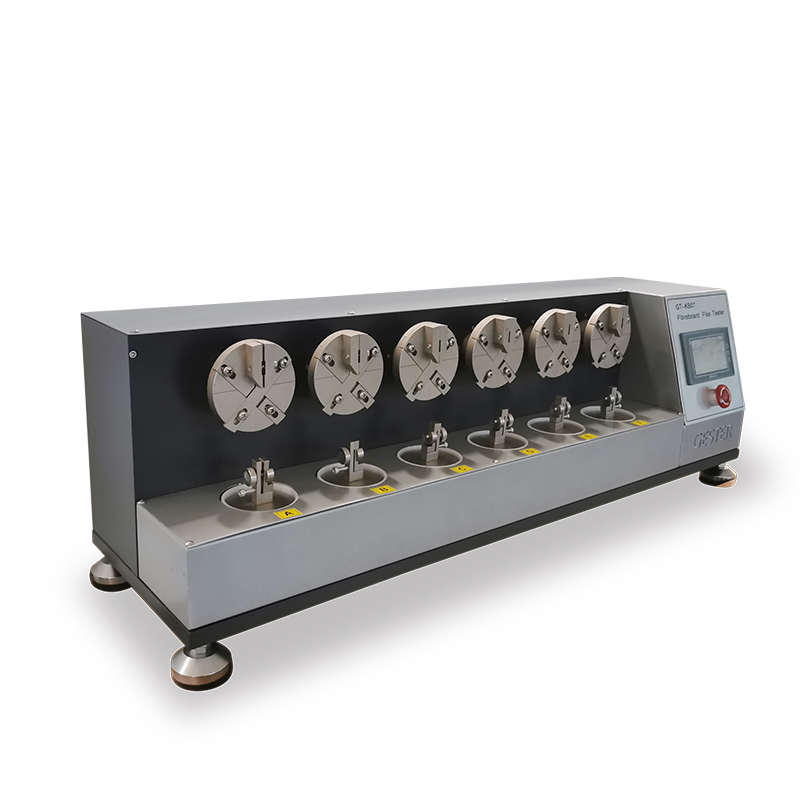
Temperature Humidity Test Chamber is for conditioning of samples prior to testing. It also can be used for a variety of materials of high - low temperature alternating test. The test temperature, humidity, time can be programmed. Provides conditions of temperature form -40degree to +150degree and of humidity form 20% to 98
Standards of climatic test chamber:
CNS, ISO, JIS, ASTM, DIN, BS, IEC, NACE, UL,MIL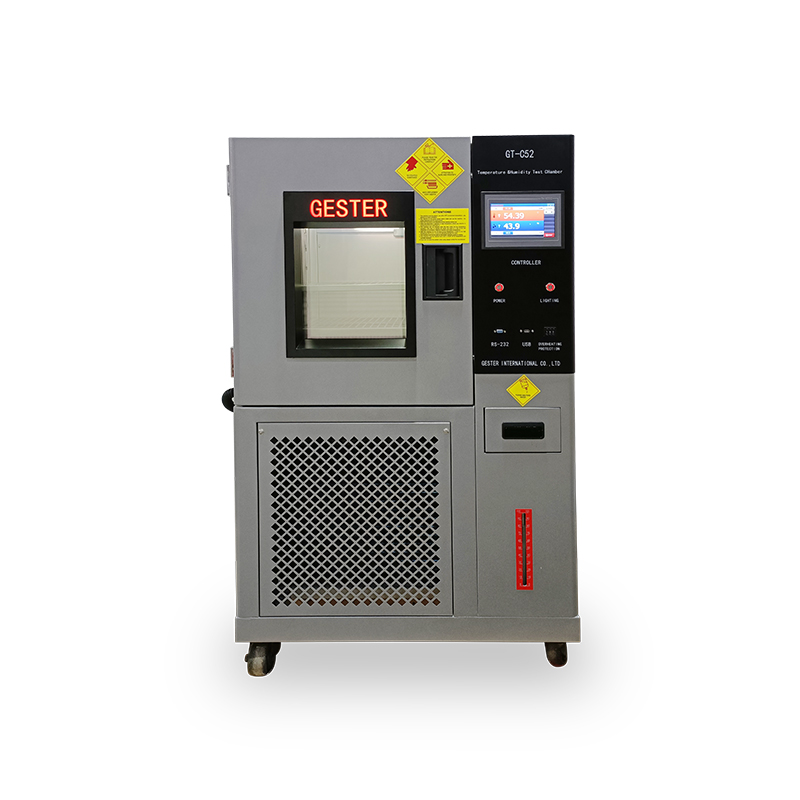
Evaluate the wear resistance of the insole through abrasion tests to ensure it does not wear out or damage quickly after prolonged use.
Test apparatus:
IULTCS & Veslic Leather Abrasion Tester GT-KC01-1
This IULTCS & Veslic Leather Abrasion Tester is used for color fastness testing of leather, plastic and textile. Under the specified pressure, let white wool felt to do reciprocating abrasion to the surface of dye sample. After a specified count, to assess the color fastness of sample by checking the color change and fading of sample and the discoloration of white wool felt. Rubbing Fastness Tester can be used for dry abrasion testing and wet abrasion test.
Standards:
cl. 7.3.2.1 IS 15298 part 1
DIN 4843, ISO 11640, SATRA PM 173, AS/NZS 2210.2 section7.3
QB/T 2537, GB/T 20991 section 7.3, ISO 20868,
EN ISO20344 section 7.3, ISO 17700 Method A, GE-29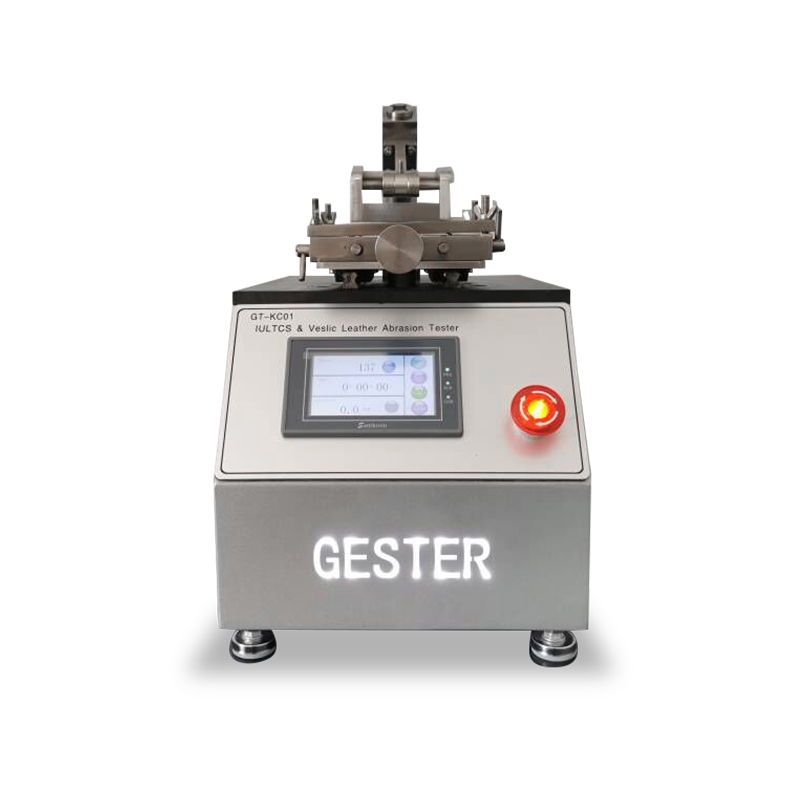
Test the moisture absorption properties of the insole material to ensure it remains dry and comfortable during use. This is typically assessed through Water Absorption and Water Desorption tests.
Test apparatus:
Insole / Insock Absorption and Desorption Tester GT-KC07
This Insole / Insock Absorption And Desorption Tester is used to determine the water absorption and desorption of insole and insock for various shoes. The specimen, placed onto a wet base plate, is submitted to repeated flexing during under a given pressure (in the same manner as the insole of a shoe during working).
Standards
EN ISO 20344 section 7.2 , GB/T 20991 section 7.2
EN ISO 20347 section 5.7.3 AS/NZS 2210.2 section 7.2
EN 12746, ISO 22649, SATRA TM220, BS 3144 section 22
ISO5404, cl. 7.2.2 of IS 15298 part 1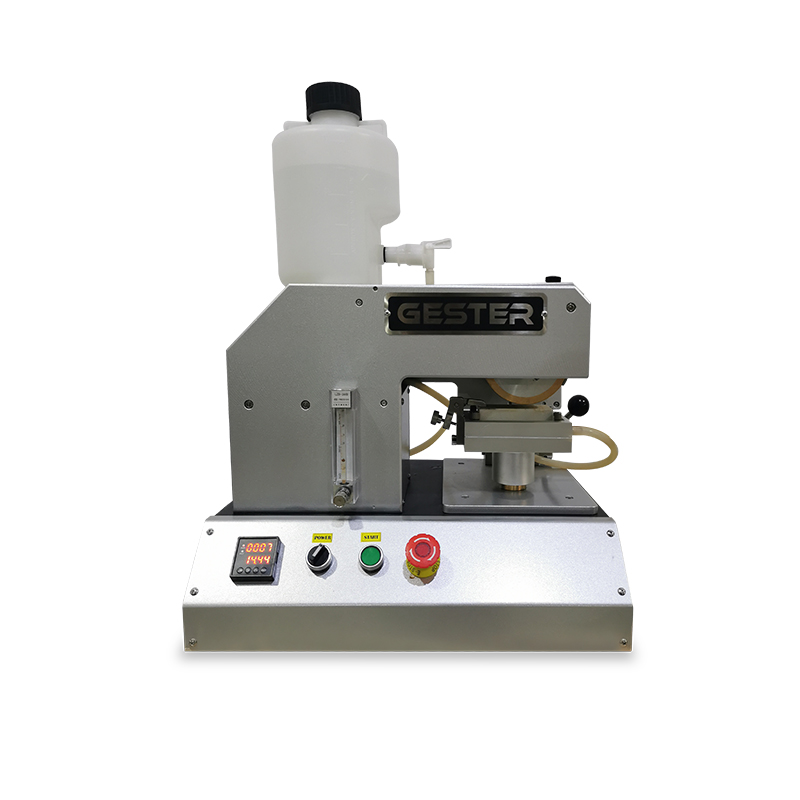
The Elmendorf Tearing Strength Tester A Complete Guide
Working principle advantages and disadvantages of solar water pump
Solar water pumps are used in both residential and commercial applications. They offer a clean alternative to fossil fuel-powered windmills and generators. There are two main types of solar water pumps. Surface pumps sit above ground and move water through pipes. These can slowly move large volumes of water. Surface pumps are often found on farms or in large irrigation systems, where water needs to be moved from lakes to fields. Submersible solar water pumps sit underground, but have solar panels attached to the ground. Submersible pumps are used to move water from wells to the surface.
The main difference between solar pumps and conventional pumps is their power source. Solar water pumps rely on solar panels to operate. The solar panels can be built into the device or be a separate structure connected to the pump via electrical wiring. The solar panels then power the device, allowing it to operate independently of any existing electrical system.

Solar pumps range in size from small pumps to power fountains and large pumps for extracting water from underground aquifers. Built-in panels are typically used for smaller pumps, while larger pumps require a separate installation. Photovoltaic power sources have few moving parts and operate reliably. They are safe, silent, and pollution-free. They do not produce any solid, liquid, or gaseous hazardous substances, making them absolutely environmentally friendly. They offer simple installation and maintenance, low operating costs, and are suitable for unmanned operation. They are particularly well-regarded for their high reliability. Their compatibility allows photovoltaic power generation to be combined with other energy sources, allowing for easy expansion of the photovoltaic system as needed. Their high degree of standardization allows for the use of series and parallel connections to meet varying power requirements, resulting in strong versatility. They are environmentally friendly, energy-efficient, and ubiquitous, with solar energy widely available for a wide range of applications.
Characteristics of Various Solar Water Pumps
1. Brushed DC Solar Water Pump:
When the pump is operating, the coil and commutator rotate, while the magnet and carbon brushes do not. The alternating direction of the coil current is achieved by the commutator and brushes, which rotate in tandem with the motor. As the motor rotates, the carbon brushes wear out. After a certain period of operation, the carbon brushes wear out, causing the gap to widen and the noise to increase. After several hundred hours of continuous operation, the carbon brushes no longer function properly.
Advantages: Low price.
2. Brushless DC Solar Water Pump (Motor Type):
Motor-type brushless DC pumps utilize a brushless DC motor and an impeller. The motor shaft is connected to the impeller, and there is a gap between the stator and rotor of the pump. Over time, water can penetrate the motor, increasing the risk of motor burnout.
Advantages: Brushless DC motors are standardized and mass-produced by specialized manufacturers, resulting in relatively low cost and high efficiency.
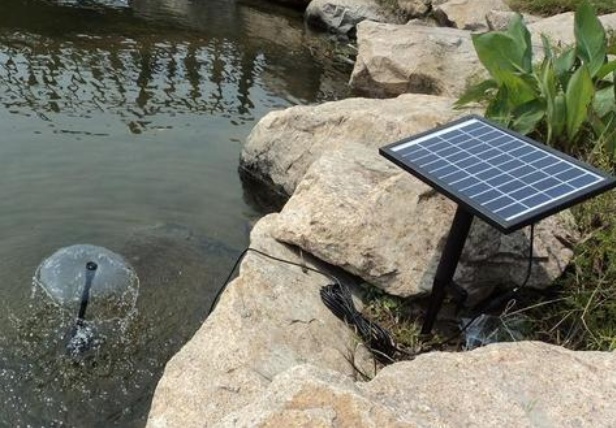
3. Brushless DC Magnetic Isolation Solar Water Pump:
This brushless DC pump utilizes electronic commutation, eliminating the need for carbon brushes. It features a high-performance, wear-resistant ceramic shaft and sleeve. The sleeve is integrally connected to the magnet through injection molding, preventing wear and tear. This significantly extends the life of the brushless DC magnetic pump. The stator and rotor of this magnetic isolation pump are completely isolated. The stator and circuit board are encapsulated with epoxy resin, making it 100% waterproof. The rotor utilizes permanent magnets, and the pump body is constructed from environmentally friendly materials. This pump offers low noise, a compact size, and stable performance. Various parameters can be adjusted through the stator winding, and it operates across a wide voltage range.
Advantages: Long life, low noise levels below 35dB, and suitable for hot water circulation. The motor's stator and circuit board are encapsulated with epoxy resin and completely isolated from the rotor, making it suitable for underwater installation and completely waterproof. The pump's shaft utilizes a high-performance ceramic shaft for high precision and excellent vibration resistance.
As everything has its opposites, advantages and disadvantages are common. What are the disadvantages of solar water pumps? The upfront cost is high, and depending on the size of the required pump, the initial investment in installing the system can be prohibitive for some systems. The system also has high intermittent operation, requiring good sunlight, especially during the prime hours of 9 a.m. to 3 p.m., while cloudy days translate into lower output, which can be a potential problem in some applications. A key fact about distributed solar pumps is that they only provide power during daylight hours. In many cases, this is sufficient for the intended use, but if pumping is required once the sun goes down, a pump with battery storage should be considered.
Large pumps can include battery arrays capable of providing 12 hours or more of continuous power, but such arrays are inherently bulky and may require separate, shaded storage for protection from inclement weather.
Can I Replace R404A with R134A?
The idea of swapping R404A with R134A may sound simple, but it's not that straightforward. These two refrigerants have different properties and are designed for different types of systems, so just replacing one with the other isn't recommended.
What’s the Difference Between R404A and R134A?
R404A is a blend of gases mainly used in low-temperature systems, like freezers and refrigerated trucks. It has a high GWP (Global Warming Potential), making it a target for phase-out due to environmental concerns.
R134A, on the other hand, is used in medium-temperature systems, like air conditioners and refrigerators. It has a lower GWP than R404A, but it still contributes to global warming, so it's not a perfect solution either.
Why You Can't Just Swap Them?
Temperature Range
R404A works well in systems that require very low temperatures, while R134A performs better in moderate temperature environments. Swapping them could lead to poor cooling performance.
Pressure Differences
R404A operates at higher pressures than R134A. If you switch refrigerants, the system might not work properly, and you could risk damaging parts like the compressor.
Lubricant Compatibility
The oils used in refrigeration systems are tailored to the refrigerant. If you change from R404A to R134A, you may need to replace or flush the oil, as they are not always compatible.
Can You Convert the System?
Technically, you can convert a system, but it requires replacing or adjusting key components like the compressor, expansion valve, and lubricants. It’s not a simple or cheap process.
The Environmental Aspect
While R134A is better for the environment than R404A, it still has a high GWP. More eco-friendly options like R32 or R1234yf are available and becoming more popular as replacements.
Conclusion
In short, you can’t just replace R404A with R134A without modifying your system. If you're aiming for a more eco-friendly refrigerant, it might be better to explore newer alternatives with lower environmental impact. Always consult a professional if you're considering a refrigerant change.
What Type of Gas is R32?
When it comes to air conditioning and refrigeration, the term "refrigerant" often pops up. But among the many refrigerants used, R32 is becoming increasingly popular. So, what exactly is R32, and why is it causing such a buzz in the industry?
R32: A Modern Refrigerant
R32 is a type of refrigerant gas used in air conditioning and refrigeration systems. Technically, it’s a hydrofluorocarbon (HFC), which is a chemical compound that helps transfer heat efficiently. But more specifically, R32 is known for being a low global warming potential (GWP) gas compared to older refrigerants, like R22 or R410A.
What's the Difference Between R32 and Freon Gas?
You might have heard of "Freon," a term commonly used to refer to refrigerant gases. However, “Freon” is actually a brand name and has historically referred to various types of chlorofluorocarbons (CFCs) and hydrochlorofluorocarbons (HCFCs). While Freon was once the go-to refrigerant for cooling systems, it's now being phased out due to its harmful effects on the ozone layer.
R32, on the other hand, is much more environmentally friendly. It has one-third the global warming potential of R410A, which makes it a step toward reducing the carbon footprint of cooling systems. So, when people refer to “Freon gas” nowadays, they’re often thinking of older refrigerants, whereas R32 is a modern, safer alternative.
Why Is R32 Gaining Popularity?
Environmental Benefits: One of the most significant reasons R32 is gaining traction is its lower GWP. Unlike Freon-based gases, R32 doesn’t contribute as heavily to global warming, making it a much cleaner choice for the planet.
Energy Efficiency: R32 is more energy-efficient, meaning it can cool your space faster and with less energy. This translates into lower electricity bills and less environmental impact.
Better Performance: R32 has a higher cooling capacity than some older refrigerants, which means it can do the same job with less refrigerant. It’s a win-win for both performance and sustainability.
R32 in Practice
R32 is most commonly found in modern air conditioners and heat pumps. If you’re in the market for a new cooling system, there’s a good chance that R32 is the refrigerant used. It's also easier to handle and recycle compared to older gases, which makes the transition to R32 smoother for manufacturers and technicians alike.
The Bottom Line
To sum it up: R32 is a more eco-friendly, energy-efficient alternative to older refrigerants like Freon. It’s the go-to refrigerant for newer air conditioning systems, with lower environmental impact, better performance, and improved energy efficiency. So, if you want a cooler home with a smaller carbon footprint, R32 might be your best bet!
Whether you're a tech enthusiast or simply looking to stay informed about the world of cooling, understanding R32 and its benefits is key to making smart, sustainable choices in today’s world.
Gachn Group 4+4 color Flexographic Press Installation in Africa Professional Empowerment, Embarking on a New Journey in Wide-Format Printing
Recently, Gachn group 4+4-color satellite-type flexographic printing press arrived in Africa and is about to begin installation and commissioning. With its outstanding performance and precise register technology, this satellite-type flexographic printing press is specifically designed for printing wide-format, thin, and difficult-to-control tension materials. Its arrival in Africa will inject new vitality into the local printing industry.
Equipment Highlights: Tailored to African Printing Needs
The core advantages of the Gachn Gourp 4+4color flexographic printing press are key to its ability to meet the demands of the African market.
Excellent Register Accuracy: The satellite-type structure ensures close contact between the printed material and the shared printing plate, minimizing tension fluctuations and deformation during drying. The press achieves register accuracy of ±15mm in the transverse direction and ±10mm in the longitudinal direction. Electronic registering is achieved without stopping the machine, ensuring high-quality printing even when printing roll-type PP woven fabrics as wide as 550-850mm.
Strong adaptability: It can handle roll materials with a maximum diameter of 1500mm. The unwinding reel uses a 6-inch air shaft and the rewinding reel uses an 8-inch air shaft. The print repeatability range is 400-1200mm. The photosensitive resin sheet supports thicknesses of 1.14/2.28mm. It can be used with 0.38mm double-sided tape, providing flexibility to meet diverse printing needs.
Efficient and stable operation: The maximum machine speed is 200m/min, and the maximum printing speed is 50-150m/min. It is equipped with 8 ceramic anilox rollers (LPI rollers can be customized upon request) and 8 printing cylinders (sizes determined by customer requirements). It also features 2 printing unit drying systems, a post-print drying system, and corona treatment equipment, ensuring both high printing efficiency and quality.
Installation Preparation: Detailed attention to detail lays a solid foundation for safety
Even when installing equipment thousands of miles away, preliminary preparation is crucial. Our team meticulously handles every step, from equipment transportation and protection to on-site planning.
Equipment Transportation and Inventory: Considering the potential for bumps, humidity fluctuations, and other issues during long-distance transportation, all equipment was packaged in custom protective packaging. Key components, such as the ceramic anilox roller (produced by Shanghai Murata, with a dynamic balancing accuracy of 10g) and the center roller (made of high-quality alloy steel, with a radial runout tolerance of ±0.010mm), were equipped with additional cushioning devices. Upon arrival at the site, technicians checked the parts list and individually verified core components, including the Inovance human-machine interface, Schneider circuit breaker, Shanghai Danma servo motor, and German FAG/Japanese NSK bearings, to ensure that no components were missing or damaged.
Site Planning and Environmental Preparation: Based on the equipment's dimensions (16.8L × 3W × 4.3H m, weighing approximately 20 tons), the installation area was determined in advance with the customer, obstacles were cleared, and the equipment lifting route was planned. Furthermore, the on-site power supply (total power consumption 125kW) and air supply conditions were checked to ensure they met equipment operating requirements. For example, the electric heating and temperature control system required a stable power supply, and the pneumatic components (Taiwan AirTAC) required normal air pressure.
Installation Process: Professional Operation, Step-by-Step Precision
1. Basic Component Installation: Stabilizing the Equipment's "Frame"
First, install the frame and center roller. The center roller, the core of the satellite printing press, features a hollow, double-layer structure with a surface plating exceeding 200µm. During installation, specialized tools are used to adjust its levelness to ensure a radial runout tolerance within ±0.010mm. Next, the drive system, including the servo motor traction unit and T-shaped timing belt, is installed to ensure synchronized operation of the drive rollers, laying the foundation for subsequent printing accuracy.
2. Printing Unit Assembly: Building the Core Printing System
Next, assemble the eight printing units. Each unit is equipped with a ceramic anilox roller, a print cylinder, and a closed doctor blade (Changhong brand, imported Danish technology). When installing the ceramic anilox roller, ensure its parallelism with the print cylinder to ensure even ink transfer. The closed doctor blade utilizes a fully enclosed aluminum alloy design to reduce solvent evaporation. During installation, precisely adjust the contact pressure between the doctor blade and the anilox roller to ensure effective squeegeeing. At the same time, two sets of video inspection equipment (from Wuxi Kesai) were installed to monitor print quality in real time.
3. Auxiliary System Installation: Improving Equipment Functionality
Tension Control System: A dual-station unwinding and rewinding device was installed, equipped with a magnetic powder brake, a low-friction cylinder (from Fujikura, Japan), and a smooth float roller. This provides automatic tension compensation and closed-loop control, ensuring stable tension during the printing process and preventing loosening or deviation.
Drying and Cooling System: Two printing unit drying systems and one post-print drying system were assembled, equipped with a constant temperature chamber (including heating tubes, intelligent temperature controller, and PID temperature control) to ensure precise and controllable drying temperatures. After the cooling and traction device was installed, the cooling effect was tested to ensure that the printed material quickly cooled and set.
Correcting System: An automatic EPC ultrasonic probe correcting system (from Best, Germany) was installed, supporting manual, automatic, and center return functions, with ±65mm left and right adjustment, ensuring precise positioning of the material during the printing process.
4. Electrical System Connection: Implementing Intelligent Equipment Control
Finally, the electrical system is connected and debugged, including wiring components such as the Inovance PLC, Schneider temperature controller, and frequency converter, as well as debugging the human-machine interface. During the connection process, circuit safety is strictly checked to prevent short circuits or poor contact. During debugging, the interoperability of various systems, such as the coordination between the tension control and the web-correction system, is tested to ensure the equipment's automated and intelligent operation.
Debugging and Training: Comprehensively Ensure Efficient Equipment Operation
Equipment debugging: Technicians first conduct a dry run to test the proper operation of various components, such as the servo motor's speed control, the drying system's temperature stability, and registration accuracy. Subsequently, a test print run is conducted using roll-formed PP fabric to test printing results at various print speeds (50-150 m/min). Registration accuracy is adjusted to ±0.15 mm horizontally and ±0.15 mm vertically to ensure compliance with customer production requirements.
Customer Training: Comprehensive training is provided to customer operators, covering daily equipment operation, maintenance, and troubleshooting. Detailed equipment technical documentation and operating manuals are also provided to ensure customers can operate the equipment independently and safely.
Empowering African printing, ushering in a new chapter of cooperation
Gachn has consistently provided high-quality printing equipment and services to global customers with professional technology and a rigorous approach. The installation of the GC 4+4-850 flexographic printing press in Africa is not only a delivery of equipment, but also a transfer of technology and experience. We are confident that with the successful commissioning of this equipment, it will help local customers improve printing efficiency and product quality, and promote the development of the African printing industry. Going forward, Gachn will continue to deepen its presence in the global market, providing more customers with customized printing solutions, and working together to create a new future for the printing industry!
Extend Your Ice Storage Unit’s Lifespan by 5+ Years Essential Maintenance Tips
In the world of industrial equipment, ice storage units play a vital role. Their efficient operation not only ensures stable cooling for production and daily needs but also cuts costs for businesses. Proper maintenance is the key to extending their lifespan and keeping performance consistent—with the right care, your ice storage unit can last at least 5 years longer.
Daily Inspections: Don’t Overlook the Basics
Cleaning: A Top Priority
Over time, dust and debris build up inside the unit, hindering heat dissipation and cooling performance. (Regularly clean) dirt from condenser and evaporator surfaces using professional cleaners—take care to avoid damaging components. Additionally, clean or replace air filters on schedule to ensure only clean air enters the unit, minimizing debris-related damage.Electrical System Maintenance: Keep It Reliable
Check wires and cables regularly for damage or aging, and ensure all electrical connections are secure. Test control components like contactors and relays, replacing faulty ones promptly to prevent shutdowns or serious damage caused by electrical issues.
Lubrication: Reduce Wear and Tear
Follow the equipment manual to regularly add appropriate lubricants to moving parts like compressors and water pumps. Proper lubrication minimizes friction, reduces wear, and extends component life.Maintaining an ice storage unit is a systematic process that requires attention to multiple areas. Through careful daily inspections, thorough cleaning, proper electrical upkeep, and timely lubrication, you can keep your unit in top condition. This not only extends its lifespan but also ensures reliable cooling, delivering long-term economic and social benefits.
Gas Seals vs Wet Pressurized Seals
Gas Seals vs Wet Pressurized Seals
Given increasingly stringent environmental regulations, gas sealing technology remains crucial for ensuring the safe, reliable, and sustainable operation of pumps, mixers, and rotating equipment. Dry gas end-face lubrication offers significant advantages, ensuring high product purity and zero emissions. This technology has effectively reduced hazardous emissions over the years.
It is estimated that over the past 31 years, approximately 105,000 non-contacting gas seals have been sold, with an average service life of six years. This represents a potential avoidance of approximately 272.2 million pounds (123.4 kg) of toxic releases through zero-emission technology.
Maximum Availability Control Technology (MACT) is a key tool in achieving these goals. The California Air Quality Management Department (AQMD) estimates annual emissions from chemical/refining process pumps at 432 pounds, while the latest data from the US Environmental Protection Agency (EPA) suggests up to 2,200 pounds per pump. As early as 1993, this technology was proven to save $500 per seal (at an electricity cost of 6 cents per kilowatt-hour). Today, with energy costs rising to 10–16 cents per kilowatt-hour, the annual energy savings per seal have reached $1,350.
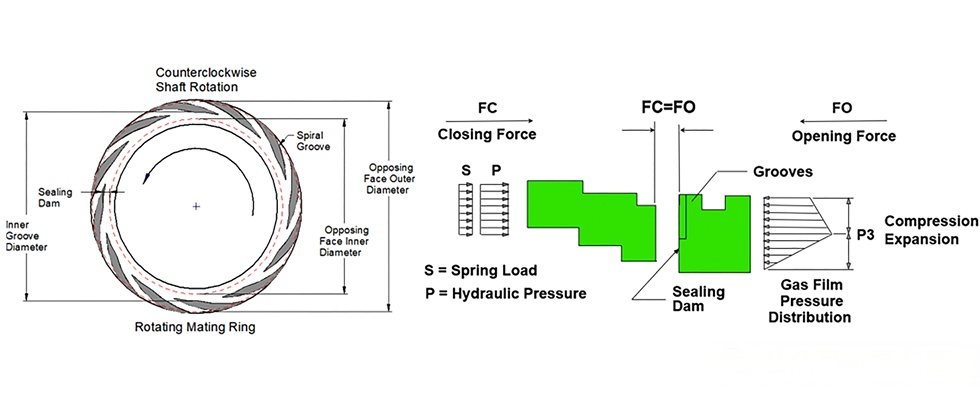
Figure 1 Energy Consumption Comparison between Gas Seals and Wet Seals

Figure 2. Typical spiral groove surface pattern and pressure gradient generated by the grooves
A variety of sealing arrangements are currently available to reduce emissions. The following is a ranking of their ability to control emissions on rotating equipment, listed from best to worst:
● Dual pressurized, non-contacting gas seal
● Dual pressurized liquid seal
● Dual pressureless seal with liquid barrier seal
● Dual pressureless seal with dry-running contacting/non-contacting barrier seal
● Single seal with sleeve
● Single seal
● Stuffing seal
The Evolution of Sealing Technology in Fluid Pumping
Early fluid pumps used fiber packing coated with wax or graphite to seal shaft leakage, but this method generated heat and shortened service life. Perforated lantern rings were introduced to improve lubrication and cooling. Good lubrication effectively extends the service life of sliding surfaces.
These limitations led to the development of mechanical shaft seals, which require effective lubrication. Advances in tribology and fluid engineering have further optimized seal lubrication systems. Manufacturers have designed pressure- and wear-resistant end face structures, some of which even utilize deformation to enhance lubrication and reduce wear. Ground and polished seal faces offer excellent pressure, friction, and wear resistance.
Liquid seal face lubrication is widely adopted due to its stability under high pressure, heat resistance, and compatibility with process fluids.
The Development of Spiral Groove Technology
Dutch tribology professor Evert Muijderman pioneered the use of a repetitive groove pattern in ultracentrifuges. This technology later evolved into mechanical seals and was first used in pumps over 30 years ago.
The non-contact function is achieved through a pattern on one sealing surface. As the shaft rotates, the pattern separates the sealing surfaces, eliminating friction. An inert gas (such as nitrogen) is used as a barrier gas, at a pressure 20 to 30 psi above the process pressure, achieving zero emissions.
Spiral grooves typically feature logarithmic spiral grooves machined into one sealing surface (usually made of a harder material). As the shaft rotates, gas is drawn into the groove, compressed by viscous shear, and then expands at the seal dam, creating a separation gap of several microns between the two sealing surfaces. The static pressure effect during downtime helps minimize seal surface damage.
The earliest spiral groove seals were unidirectional grooves on the outer diameter of a fixed end face. Because process pump speeds are much lower than those of turbo compressors (only 1200 to 3600 rpm), stronger materials, advanced groove designs, and lower spring loads and O-ring friction are required to improve seal face separation efficiency.
Application of Spiral Groove Technology
In 1992, a polymer manufacturer successfully implemented a non-contacting dry gas seal in a pump, effectively protecting product purity and the environment. Over the past 30 years, this technology has been widely used in equipment such as pumps, mixers, fans, and blowers, operating under a wide range of speeds, pressures, temperatures, and solids loadings.
Figure 3 shows the first dual-pressurized non-contacting seal installed in a large-bore centrifugal pump. Figure 4 illustrates a non-contacting gas seal suitable for ANSI and DIN standard bores, featuring a spiral-grooved mating ring and an inert barrier gas. Figure 5 shows the same seal configuration with the addition of a drain for process conditions up to 30% solids loading.
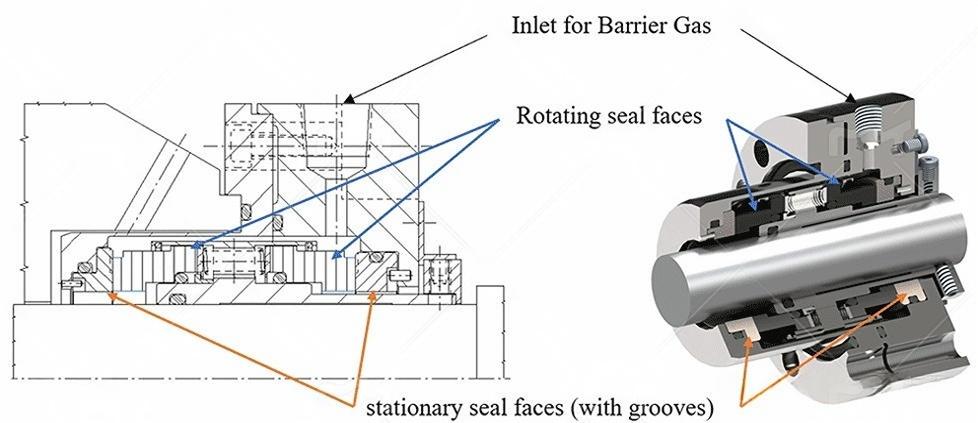
Figure 3: The first dual-pressure, non-contacting seal installed on a process pump, circa 1992
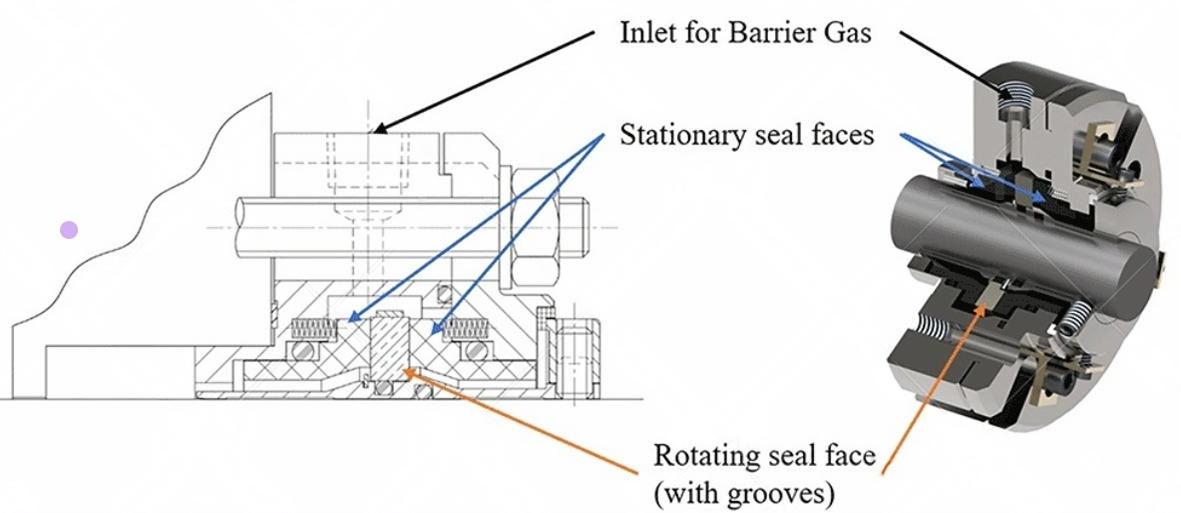
Figure 4: Gas-lubricated, non-contacting seal for a standard bore seal cavity
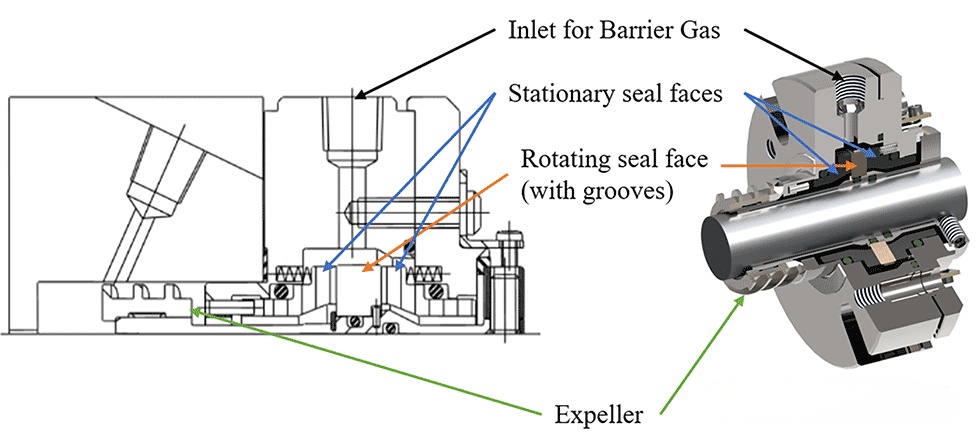
Figure 5: Gas-lubricated, non-contacting, standard bore seal cavity
This technology was subsequently expanded to mixers and containers, widely used in the pharmaceutical, food processing, and petrochemical industries to ensure product purity. Designers also developed spiral grooves on the carbon primary ring to accommodate low-speed and high-shaft runout conditions, achieving both hydrodynamic and hydrostatic lift.
Twenty years later, seal designs were further upgraded to meet the demands of higher pressures and solids-laden processes. Figure 7 shows a new seal designed for large-bore ANSI pumps, offering enhanced solids handling and performance.
The latest development is a gas seal suitable for high-temperature service (up to 800°F / 425°C). The metal bellows seal, shown in Figure 8, provides spring force, accommodates axial displacement, and effectively transmits torque. The bellows acts as a dynamic sealing element, supporting a variety of secondary seal combinations. The seal features pressure balancing and reverse operation to prevent accidental release of process fluids.
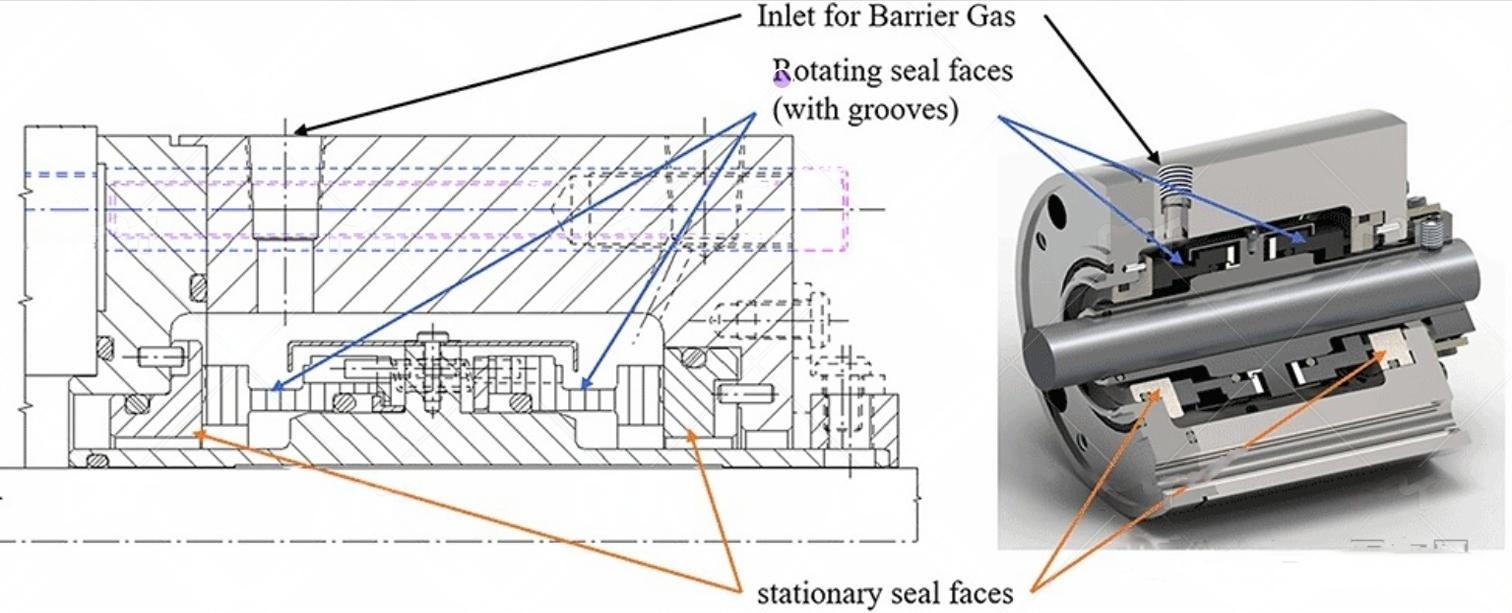
Figure 6: Gas-lubricated, non-contact mixer
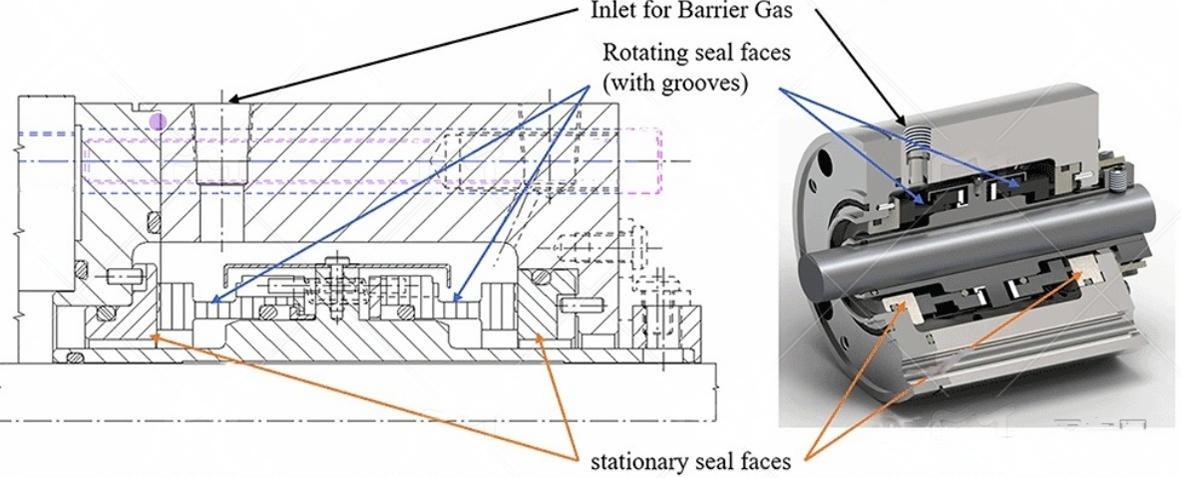
Figure 7: Gas-lubricated, non-contact seal for high pressure and solid materials
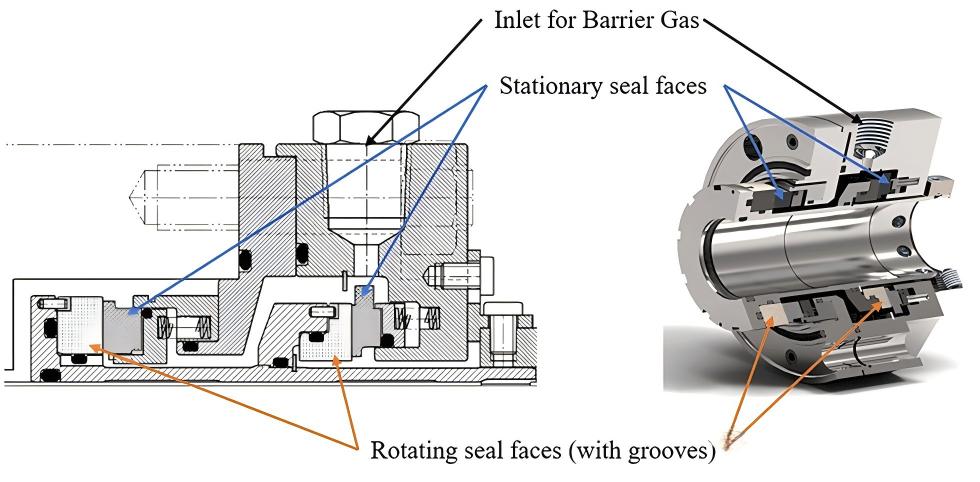
Figure 8: Gas-lubricated, non-contact seal for high-temperature service
Application of Spiral Groove Technology
In all pressurized dual seal configurations, the barrier fluid pressure is higher than the process pressure being sealed. The dual gas seal differs from other pressurized seal configurations in that it does not rely on fluid circulation between the seals, but instead relies on an external inert gas source to pressurize the seal chamber. According to API 682, Fourth Edition, the corresponding piping plan for this type of seal is Piping Plan 74. Figure 9 shows a basic schematic diagram of this plan.

Figure 9 API Piping Plan 74 - API 682 Fourth Edition
The sealing system works by allowing fluid to flow from a high-pressure area to a low-pressure area. Mechanical seals minimize leakage through sealing faces and O-rings while maintaining a small gap to prevent overheating. This gap allows the high-pressure fluid to flow to the atmosphere. Dry gas barrier seals use a regulated inert gas (such as nitrogen) at a pressure 30 to 50 psi above the process pressure to achieve a seal.
Nitrogen is most commonly used as the barrier gas due to its compatibility and affordability. Nitrogen is typically supplied from a pressurized nitrogen line or from a nitrogen cylinder, but this is less reliable. If nitrogen pressure is insufficient, a gas booster can be used.
The control system must regulate pressure, filter the barrier gas, and monitor pressure and flow to prevent overpressure. Due to the extremely small gap between the sealing faces, the gas must be filtered to less than 1 micron. A flow meter monitors the gas flow, while the API Plan 74 panel is equipped with a transmitter to continuously monitor the seal status. The key parameter is the barrier gas pressure supplied to the seal.
Advantages of Gas Seals for End Users
Despite the numerous advantages of gas seals in pumping equipment, there are still some misunderstandings regarding the choice between wet and dry dual pressurized seal configurations. Wet pressurized seals rely on a liquid barrier fluid (such as API Plans 53A/B/C and 54) for lubrication and cooling, while dry pressurized seals use gas and require minimal preconditioning.
Cost Comparison
The base cost of wet and dry seal cassettes is similar. Wet seals require nitrogen, clean fluid, electrical wiring, cooling water, and power for the pump and fan; dry seals, on the other hand, rely primarily on nitrogen and electrical connections; if pressurization is required, they only require power to the nitrogen booster.
Barrier Fluid Compatibility
Wet seals have higher compatibility requirements for liquid barrier fluids, which may affect process quality. Dry seals use inert nitrogen, which generally does not pose compatibility issues.
System Monitoring and Maintenance
Wet seals require regular replenishment of barrier fluid and maintenance of the heat exchanger. Dry seals require monitoring of barrier pressure and a backup nitrogen source to ensure system reliability. Although high gas flow rates with dry seals require investigation, continued operation is generally acceptable as long as the barrier pressure remains stable.
Energy Consumption and Heat Control
Compared to gas seals, wet seals consume more horsepower and generate more heat. Gas seals also experience lower temperature rises and lower energy consumption. According to statistics, wet seals consume approximately 1,300 kWh of electricity and release 2 tons of carbon dioxide (CO₂) annually, while dry seals consume only 350 kWh and release 0.54 tons of CO₂. Over the past 31 years, approximately 105,000 gas seals have been installed worldwide, with an average operating life of six years per system, resulting in cumulative energy savings of 8.6 million kWh, equivalent to the total electricity consumption of the residents of Houston, Texas.
Installation Flexibility
Gas seal systems eliminate the need for complex fluid circulation, allowing for greater flexibility in the installation location of control and monitoring instruments. In contrast, wet seals require closer installation to the equipment to reduce piping losses. This flexibility is particularly useful in equipment retrofit projects, facilitating maintenance and repairs.
Compared to traditional liquid-lubricated contact seals, non-contacting dry gas seal technology significantly reduces fugitive emissions from process pumps, saving thousands of tons of toxic waste and eliminating the need for cooling water. Furthermore, this technology reduces parasitic power losses, significantly improving energy efficiency and saving approximately 2 tons of CO₂ per pump annually. Furthermore, improved mean time between repairs (MTBR) and equipment reliability offer significant operating cost advantages.
Non-contacting dry gas lubricated seal technology remains an ideal solution for achieving emission reduction goals and improving equipment reliability. As with any advanced technology, its application must be scientifically sound and tailored to local conditions. Proper selection and implementation of this technology not only improves equipment performance but also delivers significant economic and environmental benefits.
What are the common faults of water pumps?
Common faults of water pumps
please see the table below:
| Symptom | Possible Cause | Solution |
| Mechanical seal leakage | Impurities in the medium | Improve media filtration and replace or clean the filter (core) promptly. |
| Air mixed in the medium | Increase exhaust flow and install automatic exhaust valves in the pipeline. | |
| Pump inlet pressure too low, causing cavitation | Improve inlet conditions and increase inlet pressure. | |
| Flow rate deviation, pump head too high | Adjust the pump's operating point to an appropriate value. | |
| Incompatibility between the medium and the mechanical seal material, improper mechanical seal selection | Replace the appropriate type of mechanical seal. | |
| Improper flushing or cooling pipe installation | Re-adjust the installation. | |
| Pump noise and vibration | Air entering the pump | Install an automatic air vent at the highest point in the pipeline |
| Cavitation in the pump | Improve inlet conditions, increase inlet pressure, and reduce the outlet valve | |
| Foreign matter in the pump | Disassemble the pump and remove foreign matter | |
| Lack of oil in the pump or motor bearings | Lubricate more thoroughly and replace bearings if necessary | |
| Poor coupling alignment | Realign and replace damaged coupling components if necessary | |
| Motor temperature too high | Ambient temperature too high | Increase pump room ventilation |
| Pump flow rate deviation, causing motor overcurrent | Control the pump operating point within a reasonable range | |
| Voltage too low or too high | Improve power supply voltage | |
| Motor bearing failure | Lubricate or replace bearings | |
| Motor fan failure | Troubleshoot fan failure | |
| Coupling misalignment | Realign |
Maintenance of water pump system
- Regularly clean the exterior of the water pump and motor, and regularly clean the components inside the electrical control cabinet (using a vacuum cleaner is recommended).
- Regularly inspect the connections and fastenings of the water pump and piping, and regularly check the wiring inside the electrical control cabinet for loose connections.
- Regularly add or replace grease to the bearings of the water pump and motor. For components lubricated with thin oil, check the oil level frequently to ensure it is neither too high nor too low, and consider changing the oil if necessary. If bearings are deteriorating, replace them promptly.
- Regularly inspect the filter at the water pump inlet and replace or clean the filter screen (core) promptly.
- Regularly inspect the water pump mechanical seal for leaks. If leaks are detected, identify the cause, correct it, and replace a new mechanical seal.
- Regularly check the alignment of the water pump coupling and adjust it appropriately.
- Regularly inspect the motor insulation.
- Regularly check the actual operating point of the water pump to ensure it is normal. If not, adjust it appropriately.
Gachn Group's PP woven valve bag complete line solution one-stop turnkey service launched in West Africa
Amidst the rapid growth of the global packaging industry, PP woven valve bag products, thanks to their excellent performance, have found widespread application in numerous fields, including chemicals, building materials, and food.
For clients in emerging markets, building a complete and efficient PP woven valve bag production line and enabling localized packaging industry development is key to enhancing market competitiveness. Leveraging its strong technical expertise and extensive industry experience, Gachn Group successfully implemented a complete PP woven valve bag production line solution as a one-stop turnkey service at a client's factory in West Africa, injecting strong momentum into the local packaging industry.

Ⅰ. Turnkey Project: Worry-Free Project Guarantee
Gachn Group understands the complexities of overseas project implementation and has established a systematic, standardized turnkey project. From factory delivery to final acceptance, we strive for excellence in every step, providing customers with worry-free service.
Before equipment leaves the factory:Gachn Group conducts comprehensive and rigorous testing and commissioning of all equipment. Professional technicians, following a high-standard quality inspection system, meticulously inspect each piece of equipment for performance, accuracy, and safety, ensuring that each unit meets factory standards and lays a solid foundation for subsequent transportation and installation.
During transportation:Gachn Group collaborates with professional logistics partners to develop an optimal transportation plan based on the equipment's characteristics and road conditions at the destination. Customized packaging materials are used to properly package the equipment to protect it from impact, impact, and moisture during transportation. Transportation progress is monitored throughout the entire process, allowing for prompt response to any potential issues.
During the installation and commissioning phase:Gachn Group's after-sales team provides professional and high-quality service. They systematically install the equipment according to a detailed, pre-defined installation plan, ensuring precise positioning and secure connections. After installation, comprehensive commissioning is performed to optimize all equipment parameters for optimal operation.
During the pilot production phase:our after-sales engineering team will guide customers through small-batch production, verifying the equipment's operational performance and product quality through actual production. During the pilot production phase, potential issues are promptly identified and resolved, and production processes are adjusted and optimized to prepare for large-scale production.
During the final acceptance phase:Gachn Group and customers will conduct a comprehensive inspection of the equipment's performance, product quality, and production efficiency, based on pre-agreed acceptance criteria. Final acceptance is considered complete only when all indicators meet or exceed these standards.
Ⅱ. Technical Support: Strong Backing
Gachn Group's technical strength provides a strong backing for providing customers with high-quality solutions and services. This is due to the professional background and extensive experience of its engineers, as well as its continuous investment in technology research and development and services. Gachn Group boasts a R&D team of over 100 engineers, whose backgrounds span mechanical engineering, automation control, materials science, and other fields relevant to PP woven valve bag production. Their solid theoretical knowledge and extensive practical experience enable them to provide customers with professional technical support and solutions.
Gachn Group's engineering team has participated in numerous PP woven valve bag machine installation projects both domestically and internationally, accumulating extensive project implementation experience. They are also familiar with the principles of equipment installation.
Investment in technological R&D is key to Gachn Group's continued technological leadership. The company invests significantly annually in R&D, establishing a dedicated R&D team and advanced R&D laboratories. The R&D team continuously explores new technologies and processes, upgrades and improves equipment, and enhances performance and efficiency, while reducing energy consumption and production costs.
Regarding service investment, Gachn Group has established a comprehensive service system to provide comprehensive customer support. The company's dedicated service team provides timely and efficient after-sales service. Whether it's equipment installation and commissioning, troubleshooting, or routine maintenance, the service team responds to customer needs and resolves issues in the shortest possible time.
III. Industry Value: Supporting the Development of the Packaging Industry in Emerging Markets
Gachn Group's complete turnkey solutions are of great significance to overseas customers, particularly those in emerging markets, in developing localized packaging industries.
The packaging industry in emerging markets is often in its infancy, lacking comprehensive production systems and professional technical talent. Gachn Group's complete line solutions offer customers one-stop support, from equipment to service, helping them quickly build a complete PP woven valve bag production line, shortening project timelines and reducing project risks. Through localized production, clients in emerging markets can reduce their reliance on imported packaging, lower transportation and procurement costs, and improve product market responsiveness. Furthermore, localized production can drive the development of related local industries, create jobs, and boost economic growth.
Gachn Group's solutions can also help clients in emerging markets improve the quality and quality of their packaging products, enhance their market competitiveness, and promote the upgrading and development of the local packaging industry.
IV. Conclusion
If you are an overseas client, especially one in an emerging market, planning to develop a localized PP woven valve bag production line, Gachn Group's complete PP woven valve bag production line solution is an ideal choice. With strong technical capabilities, a comprehensive turnkey process, and a high-quality training system, we can provide you with worry-free service throughout the entire process.
Please contact us today to discuss your detailed proposal. Our professional team will provide personalized consultation and solutions to help your project succeed. Let us work together to create a bright future for the packaging industry!
